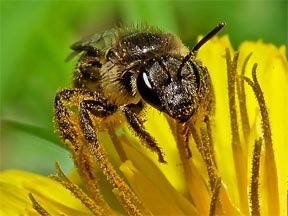 Honeybee preferences
Honeybee preferences
There are endless variations in the way that sampling data can be used, but I'm just going to show you one more -- a method that can be used to show that an organism, when given a choice, has a preference for a certain environment.
As you may know, humans are highly dependent on honeybees to pollinate our crops -- everything from almonds to zucchini (really, I looked it up on Wikipedia). So anything that distracts the bee from its duties is of concern to a beekeeper.
What if bees are more attracted to weed species (such as dandelion) than to the species we want them to be pollinating? How could we find out if this is true?
One way would be to follow a bee around (they make miniscule "bee tags" for just this purpose...) and record where it lands.
Here's an example. Let's follow a bee in a zucchini patch. From previous sampling, we know that the patch consists of 90% zucchini, 10% dandelions. We'll note each spot that the bee lands on, and write "z" for "zuchini" and "d" for "dandelion".
| The bee's path | d z z d z | d d z z z | d z d z z | z d d z z |
|---|
So, the bee visited 20 flowers.
How many of these were dandelions
What % were dandelions
Meanwhile we know that dandelions comprise only 10% of the field. How can we use these two pieces of information?
Copyright University of Maryland, 2007
You may link to this site for educational purposes.
Please do not copy without permission
requests/questions/feedback email: mathbench@umd.edu